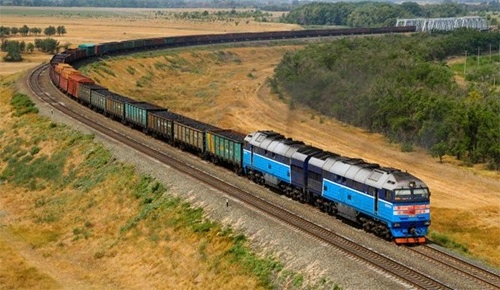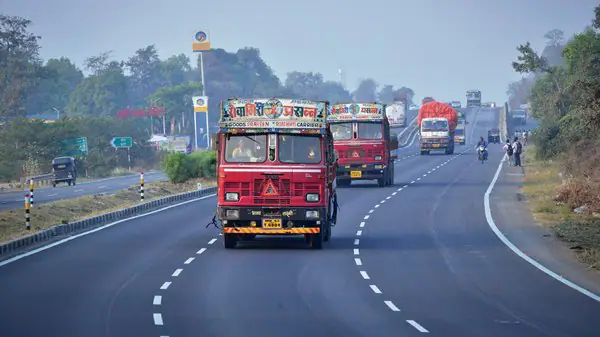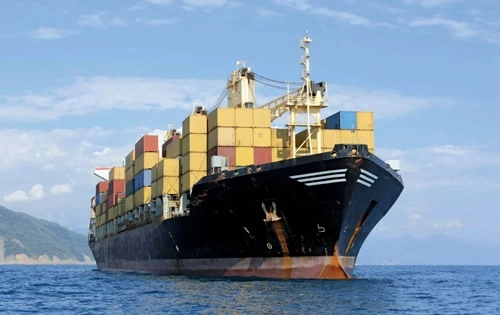You see, rail transport is nothing but moving goods as well as people by using the trains, which run on predefined laid tracks. Simply put, trains go from point A to point B using interconnected cars or carriages propelled by diesel or electric motors, as you may already know. Trains and rails are only part of the railway system. Included as well are the many kinds of train cars, or rolling stock, such as passenger carriages and freight wagons, as well as the signaling systems that ensure everything runs smoothly and the stops where passengers board and disembark. There are some specific reasons why rail transport is still a thing, even though it has been so many decades that we as a human race are using rail transport. Let’s get to just that by talking about the positive side of rail transport, shall we?

Advantages of Rail Transport
1. Very Affordable
You can’t deny the fact that rail transport really is incredibly economical when it comes to transferring people and cargo over great distances. Trains provide a more cost-effective alternative to road transport, particularly when transporting heavy goods, as compared to the high expense of fuel and tolls, you know? And yes, trains are much better at transporting large quantities at once, resulting in significantly reduced unit costs.
2. Environmentally Safe
There is not a single doubt that trains are incredibly better for the environment when compared to cars and airlines, and that’s the very reason why rail transport is still a thing. They contribute to a smaller carbon footprint since they produce significantly fewer greenhouse emissions per ton-mile, you know? Even better is those electric trains that don’t pollute the environment, however, the electricity used in them is for sure the only thing that has already polluted the environment because it had to be generated in some way, right?
3. Massive Hauling Power
Sure, more load can be carried by trains than by trucks, and that too, pretty easily, don’t you think? They are ideal for hauling large and heavy objects because of this. Increasing the number of wagons on a train allows it to efficiently transport large shipments with fewer journeys and cheaper transportation costs, and that’s the best bit.
4. Always on Time
The train tracks are already laid and on top of that, there is no traffic problem at all. So when scheduling the journey of the train properly, it will always arrive at the destination on time, sure, if nothing had gone wrong in between, you know? All in all, trains go unimpeded by traffic or severe weather, in contrast to automobile transport.
5. Prioritised Safety
See, it is another fact that rail transport is one of the safest means of travel and transport for people as well as goods. Why and how exactly? Well, when compared to road transport, the likelihood of accidents is far lower, and that’s the very reason for it. You see, rail transport is a safe alternative for both goods and passengers since trains run on tracks, where they are less likely to encounter unexpected barriers or crashes.
6. Countless Job Opportunities
When you think of rail transport, the one thing nobody thinks of is how many job opportunities it creates in a nation. From laying down the tracks to engineering the trains, and then comes the logistical jobs that are generated by the rail industry. When looking at how rail transport is used, you won’t even realize how many peoples’ livelihood depends upon it because that’s the background stuff. Well, now you know it and now you know the importance of rail transport, right?
Disadvantages of Rail Transport
Below are some drawbacks of using rail transport:
1. Huge Investment Needed Upfront
See, it is hard to swallow the fact that it really costs a lot to set up rail transportation. There is a lot going on, like putting in miles and miles of tracks, making fancy stations, and buying a bunch of trains. And keep in mind though, these investments are very special to rails, so if those brand-new rail lines aren’t full of trains, the money wasted is huge.
2. Not Very Flexible
Trains really do stay on their tracks. Trains follow set routes and tight schedules, so if you need to ship something right away, they won’t be able to do it. There is a lot to set up first before you get your goods moving by trains, it is not like loading up stuff in a truck or car and then you say GO.
3. Slow for Short Distances
See, it is 100% true that trains aren’t the best way or aren’t meant for short trips. If the distance is too short, it would be more logical to use another type of transport method than rail transport because again, as you may already know, setting up trains, and then sending off goods is a time-consuming process.
4. Risk of Monopoly
There are usually only a few big players in the train game because it costs a lot to build and keep up, right? And this can very well cause cartels, in which only a few businesses are allowed to operate and trust us, you wouldn’t like that at all. Prices can go up and new ideas can take longer to come up when there isn’t much competition, you know?
5. Not Fully Utilized, All The Time
A lot of railroads are only half full, well mostly that’s the case. And yes, as you guessed already, this means that the equipment isn’t being used to its full potential, which wastes money and time and makes things more difficult to manage.
6. High Operating Costs
It costs a lot to keep rail services going, and we mean SMOOTH. Managing things, upkeep of the engines and the railroad tracks, and a lot of other stuff cost way too much. Which ultimately hikes the price of rail transport.
Comparison Between Advantages and Disadvantages of Rail Transport
| Advantages | Disadvantages |
| Cost-effective for long distances | Requires large initial investment |
| Environmentally friendly | Limited flexibility in routes and schedules |
| High capacity for heavy loads | Inefficient for short distances |
| Reliable and punctual | Risk of monopoly |
| Safe mode of transport | Often underutilized |
| Creates numerous jobs | High operating costs |


